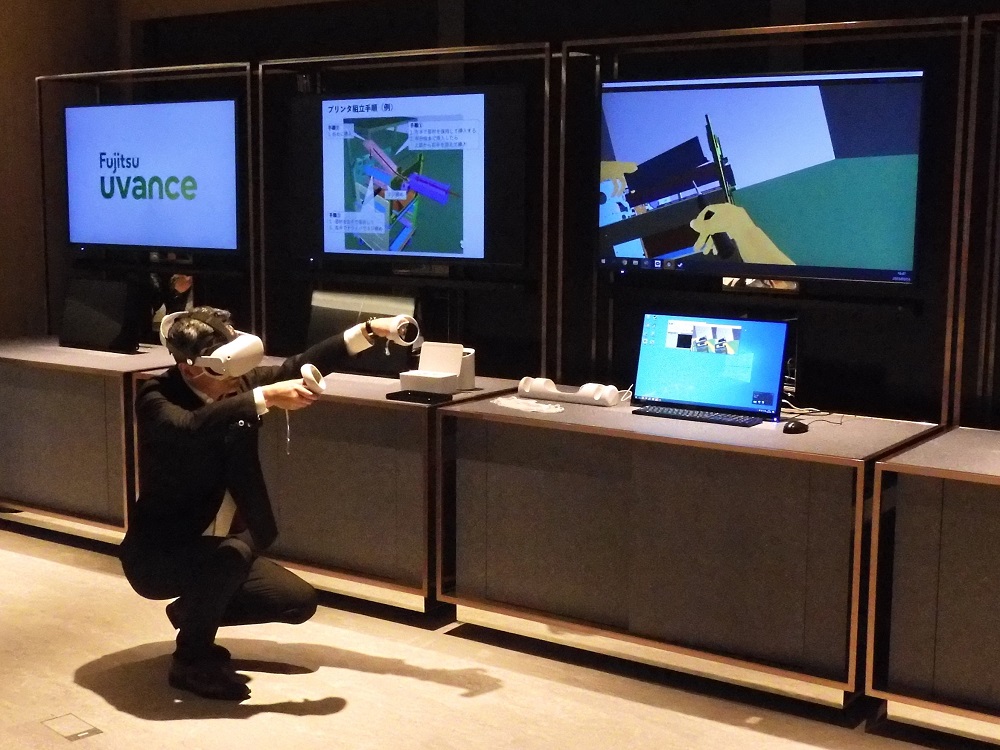
Products
Products
May 11, 2023


Staff Editor: Masanobu Nishizuka
Fujitsu has developed a Virtual Reality (VR) software to simulate the assembly and adjustment of machines and equipment as realistically as possible. Based on 3D CAD data, machine tool parts and other components are simulated at full scale on a VR image. By simulating the assembly process, difficult-to-operate parts can be discovered at the design phase.
Fujitsu held a trial event for the press on March 24 for its “COLMINA Digital Production Preparation VPS (product name for overseas customers: FJVPS) Xphere,” VR software for the manufacturing industry.
Xphere is VR software that can be used throughout the entire product development process, from designing entire products and parts using 3D CAD software, to verifying assembly operations, verifying machining during parts processing, and verifying process design and layout in the factory, all of which can be checked in VR as if the actual product were right in front of you.
The system was developed by DIGITAL PROCESS (Atsugi City, Kanagawa; President: Koji Yaginuma), a subsidiary of Fujitsu. Mr. Seiichi Kamata, General Manager of the company’s 3D Technology Business Department, commented, “The system can be used for verification with a realistic feel. If we can verify the details digitally, we can reduce rework and risky verification work after the actual product is manufactured.”
The trial event used the latest version of Xphere, which was released that same month. The latest version has enhanced verification capabilities. It can hold more detailed parts when performing assembly simulations. To make it easier for users to move around, wireless VR devices were designed to be supported.
Users wear a VR projection device on their head and hold a controller in their hand. The view of the object in VR changes according to the user’s movements as they turn their head, stand, or squat in reality. Tools and parts in the VR space can be grabbed and released with the controller. The VR can be used by multiple operators simultaneously. They can also talk to each other over the voice network and hand off objects in the VR space.
Participants were able to experience the assembly of a multifunction copier for business use. After receiving parts from the instructor in VR, the participants installed them into the multifunction copier that was being assembled. They then used a screwdriver to tighten the screws. The actual experience showed that there was not enough room for the mechanism to hook the parts together, which made assembly difficult. Also, when you try to tighten the screws afterwards, the already assembled part blocks the path of your arm and makes it difficult for the screwdriver to reach the part.
The 3D CAD software can handle these adjustments, which are then immediately reflected in the VR. Mr. Kamada appealed, “The best way to understand this kind of system is to let people experience it. We will be holding trial events every month, and we hope that people will take the opportunity to try it out.”
Staff Editor: Masanobu Nishizuka